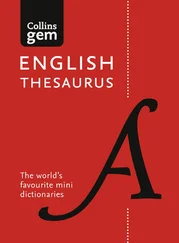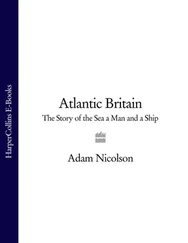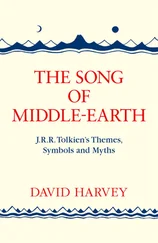AmE is largely encountered on television, on the radio, in series, and films made in America. The reasons for the unprecedented expansion of this type of English are manifold: North America’s post-World War II military and technological advancement, its politico-economic supremacy and, ultimately, its enormous human resources, for the USA is the world’s third most populous country. America’s domination of the computer industry can be stated as another cause. It is also worth noting that approximately 75 % of the world’s television programming is being controlled by the US (Flaitz, 1988, p. 72). To date, the influence of CNN and The Voice of America throughout the entire world has remained uncontested. In addition, 70 % of all native speakers of English speak the American version of the language, thus making it the most widespread native variety of English on the globe (Modiano, 1996a, p. 9).
In view of the sociolinguistic situation described above, it can therefore be ascertained that both native speakers (henceforth abbreviated to NSs) and non-native speakers of English (henceforth abbreviated to NNSs) are significantly and unavoidably affected by this high consumption of AmE. That is why it is important to recognise that AmE has become the variety to which the English as a Foreign Language (henceforth abbreviated to EFL) constituency are most frequently exposed, so that naturally, a hybrid form of the two reference varieties is utilised as a result of British English (henceforth abbreviated to BrE) learnt in formal learning environments and AmE outside of school in informal learning settings. This mixed usage of the two major strands of BrE and AmE is commonly called ‘Mid-Atlantic English’ (henceforth abbreviated to ‘MAE’) (Modiano, 2002, p. 10). The ongoing Americanisation process is virtually imposed on the EFL community, which constitutes the bulk of the survey population of the present study. This state of affairs may result in a radical shift in EFL students’ and EFL teachers’ linguistic behaviour and language attitudes: BrE appears to have lost its exclusive position as the sole variety taught in the EFL context and AmE is increasingly gaining ground.
There is some evidence in previous research that AmE has gained higher status among EFL students, which, inter alia, can assuredly be ascribed to its connection to youth culture, mass media, and the frequency of academic and tourism-related exchanges (Axelsson-Westergren, 2002; Hurtig 2006; Jungert, 2011; Söderlund, 2002). Studies also corroborated the interrelatedness between media exposure to AmE and attitudes (e. g. Mobärg, 1998).
Nonetheless, BrE, which has hitherto relegated AmE to a subservient position, often remains dominant in EFL teaching, notwithstanding that, students no longer learn English exclusively from textbook-dominated classroom instruction. Based on research (Modiano, 2002), it seems to be an indisputable fact that EFL students are increasingly being exposed to AmE in their spare time, which affects their knowledge of English (Sundqvist, 2009). Hence, the inclusion of this extramural input in EFL teaching would optimally gear up the EFL constituency for the current role of English. This role is viewed as a gateway to the usage of English in multicultural and multilinguistic forums where NSs as well as NNSs participate.
Especially related to the European context (cf. e. g., Modiano, 2017), some scholars argue that the Americanisation of English will unquestionably be conducive to the establishment of a new ‘variety’: ‘MAE’ (Modiano, 2002, 2009). It will be characterised by an awareness of differences between BrE and AmE, primarily centred on situational adaptation used as a communicatively strategic tool in international communication (Modiano, 1996a, p. 129). ‘MAE’, a form of English which includes features of the two main varieties, might for that reason evolve into the educational standard. This will incontrovertibly lead to a gradual but fundamental paradigm shift from a ‘pure’ British rendition to a conflation of BrE and AmE. Bearing this in mind, it is true to claim that these changes are bound to have crucial ramifications for the EFL context. In consequence, this large-scale investigation is meant to contribute to the establishment of an empirical platform for the study of BrE versus AmE contrasts, perceptions of and attitude shifts towards English in the EFL context in Germany and Switzerland.
The present doctoral thesis comprises three main parts: a theoretical part, an empirical one, which constitutes the bulk of this thesis, and a didactic part. The theoretical part provides the necessary background information relevant to the sociolinguistic and pedagogical role of BrE and AmE in EFL teaching. Its chapters will expand on the labels of ‘MAE’, Standard British English, General American English (henceforth abbreviated to GA), and the differences between BrE and AmE in the four language areas of lexis, pronunciation, lexico-grammar, and spelling. Additionally, a chapter will focus on a seemingly emerging paradigm shift, i. e. the most likely development of a ‘MAE’ approach in the EFL classroom based on a cross-cultural communication taxonomy. This ‘MAE’ paradigm typically encompasses the notion of situational adaptation and readily acknowledges the important tenet that a consistent usage of either BrE or AmE is to be regarded as an unrealistic teaching goal.
The empirically-based block of the present dissertation yields the results from the extensive data gathered from four informant groups with 306 participants. The findings of the study will be discussed, analysed, evaluated, juxtaposed, and displayed in tables and charts.
This empirical part is then followed by a didactic part, which seeks to demonstrate how a pluricentric vision of English may be implemented in the EFL classroom through the task-based approach by offering several tasks. It also includes a detailed analysis of an important number of teaching materials such as course and grammar books as well as a language learning magazine. The aim of the analysis is to ascertain whether AmE is duly represented in them. The present thesis ends with a conclusion and outlook on potential implications for English Language Teaching (henceforth abbreviated to ELT) induced by the research findings.
It is to be hoped that the present research will contribute to the construction of an empirical platform for adding the linguistic, sociolinguistic, and pedagogical dimensions of a mixed use of BrE and AmE in Germany and Switzerland, thus ameliorating EFL learners’ linguistic accommodation skills, notably in international settings.
Since the present research into the sociolinguistic and pedagogical dimensions of contact between the two main varieties in EFL settings is fundamentally underpinned by the notion of ‘MAE’, the following chapter aims to provide a definition of it.
2. Mid-Atlantic English
2.1 Definition
In today’s educational establishments, it seems sociolinguistically axiomatic that EFL students no longer keep the two varieties separate in their English. This linguistic convergence of BrE and AmE is labelled by some scholars as Mid-Atlantic English (cf. Melchers & Shaw, 2003, p. 186; Modiano, 2009, p. 61). As a result, ‘MAE’ describes a version of the English language that is neither predominantly AmE nor BrE in usage regarding pronunciation, lexis, lexico-grammar, and spelling. Modiano states that ‘MAE’ usage is inevitable among the ELT community and ought to be regarded as something positive. In actual fact, this hybrid form of BrE and AmE fosters cultural pluralism. Mastering ‘MAE’ “presupposes an implementation of it as a communicative strategy, as well as an understanding of the differences between BrE and AmE” (Modiano, 1998, p. 245).
Originally, the label ‘Mid-Atlantic’ referred to a kind of accent associated with a pronunciation of English that was formerly cultivated by American actresses and actors for use in theatre, especially in productions of Shakespeare, in films and by news announcers in the USA. It was also carefully taught at some American boarding schools. Consequently, it is not a vernacular accent, connected with any given American community, but is best described as a sociolect, associated with the American upper class.
Читать дальше












